The Remote Pivot!
For anyone that may have been noticing lately, our social feed is full of new opportunities to jump on board with MMB Networks and start building the next generation of IoT products.
The fact is, we’re growing, and that’s fantastic. The past 14-16 months has been a harrowing time for many people and organizations across the globe and we’ve been fortunate enough to push through 2021 with some healthy horizons.
As we’ve been promoting our various technical IoT Engineering roles that have opened up, it dawned on me just how well we’ve been able to pivot to an all virtual hiring process that includes interviewing, identifying professional and cultural fit, and most importantly, employee onboarding with our new hires that have never set foot in the office or met any of the existing team in person.
Here are a few things that stood out to me as general practices that we followed to ensure we found and brought on new team members throughout the last year as we pivoted to our temporary COVID era remote environment.
Shorter Interviews, Higher Cadence.
Partly due to technology and also due to the need to quickly fill those new roles, we decided to find ways to expedite the hiring process without making any sacrifices to the quality of the process itself. One major benefit to interviewing during the pandemic was that we didn’t have to worry about commute times and managing schedules as much as we did pre-pandemic.
The first by-product of the remote interview process was thoughtful and meaningful conversations with candidates that felt more comfortable and relaxed. With our team members at home and not travelling or commuting, it also meant we could have a couple more people in on each interview to give their thoughts and feedback while still maintaining a less intimidating atmosphere.
The ability to reduce the overall effort for candidates and interviewers to attend sessions was a huge benefit. It allowed for additional, but much shorter interviews that had additional team members to meet and evaluate candidates without once again making it intimidating or onerous on candidates.
This resulted in great hires as we had many different evaluations of candidates from a larger variety of our team members.
“I mean – looking back at it now, calling into a meeting, going on mute, and then sitting quietly and waiting for it to be over is so 2019.”
Cameras On!
We decided very early on when we realized that we weren’t going back to the office after a 2-week hiatus in March 2020 that “cameras on” was going to be a crucial part of our internal engagement strategy. The issue we were trying to avoid was the obvious hit and miss engagement with conference calls when the participants were not visible to the rest of the group.
I mean – looking back at it now, calling into a meeting, going on mute, and then sitting quietly and waiting for it to be over is so 2019.
What we thought of initially as more of an engagement mechanism focused on maintaining productivity, actually turned out to be a huge benefit to our overall cultural engagement. Our unique and vibrant culture has been maintained and our newest team members have been overwhelmingly welcomed and accepted by the entire team.
We’ve found ways to connect without ever being in the same room. From lighthearted comments on whose bandwidth is better or our background/locations, the odd child or dog sightings, or a few well timed screen freezes that makes for funny banter- I think seeing the faces and smiles and real life backgrounds has made all the difference.
Get “Social” When Onboarding
We fully encouraged and ensured that all new members were introduced to the team on the first day. This was quickly followed by micro engagements/meetups with their core team members (those they’d be working with most) over the course of their first few weeks.
We wanted to extend introductions on a personal level to the wider team. This included encouraging attendance to weekly lunches and after work drinks Zoom calls to try and keep the team conversations and atmosphere going.
As many others out there have also likely realized – there were team members that only saw each other or interacted in “the lunchroom” or “coffee station”. With remote working, it didn’t allow our new team members to fully engage with people from other departments.
To facilitate the random chance of meeting new people “in the lunchroom”, we started using a third party plug-in for Slack called Donut Meetings that mimicked the coffee run-ins that we used to have back in the olden days. A chance for team members to talk about anything they wanted and, of course, meet new team members – a critical ingredient in creating a cohesive team.
The Overall Take Away? Eat Your Own Dog Food and Iterate.
This past year has brought many firsts to organizations, pushed the limits of technology, and tested many long standing theories of what work life really looks like.
To carve out our own unique version of work life, we took a page from our own playbook when building innovative connected products and translated that into what it takes to build a great remote team.
We took a look at the core of what made us tick and tried our best to accentuate it and make the most out of the situation. When our team went fully remote, we embraced it. When our Hack Day didn’t have enough participation, we changed it. When we needed to hire new team members and the interview process didn’t cut it, we flipped it on its head. That’s how we’ve been able to continue driving our growth from within during one of the most challenging eras in generations.
Sign-Up for our Newsletter

